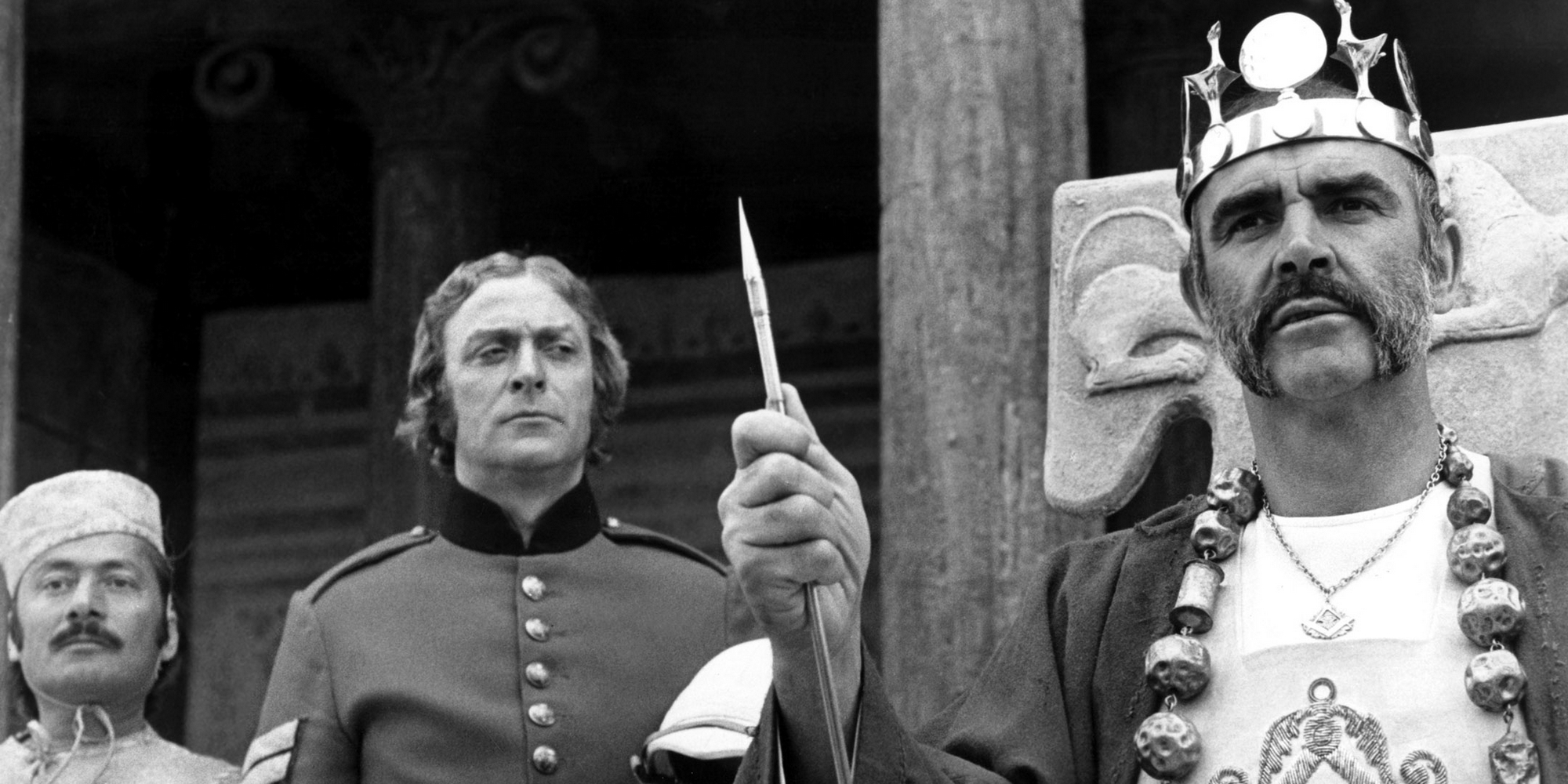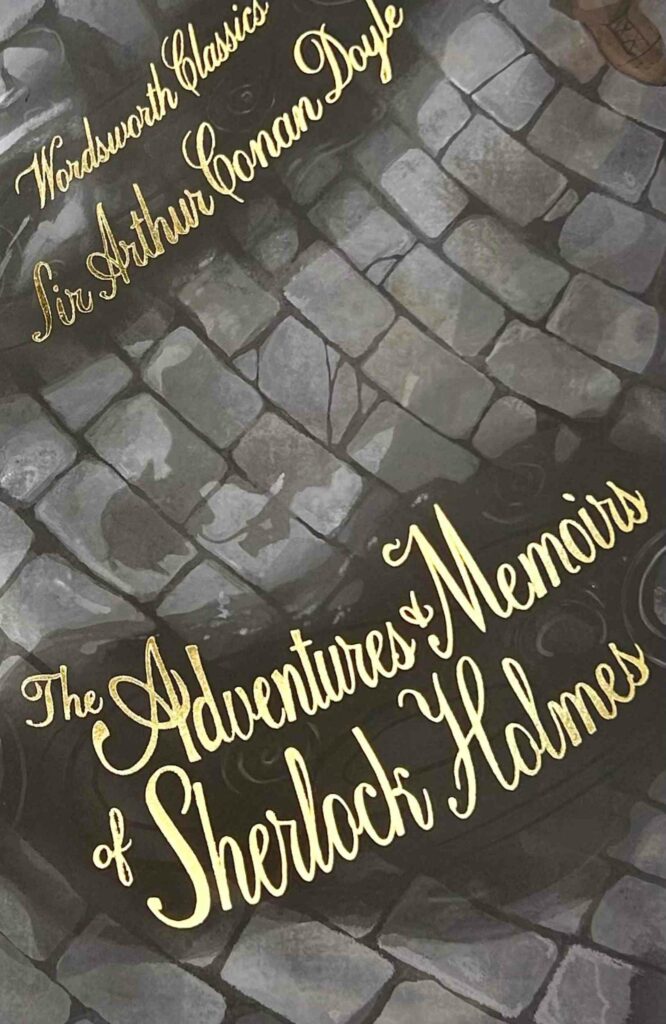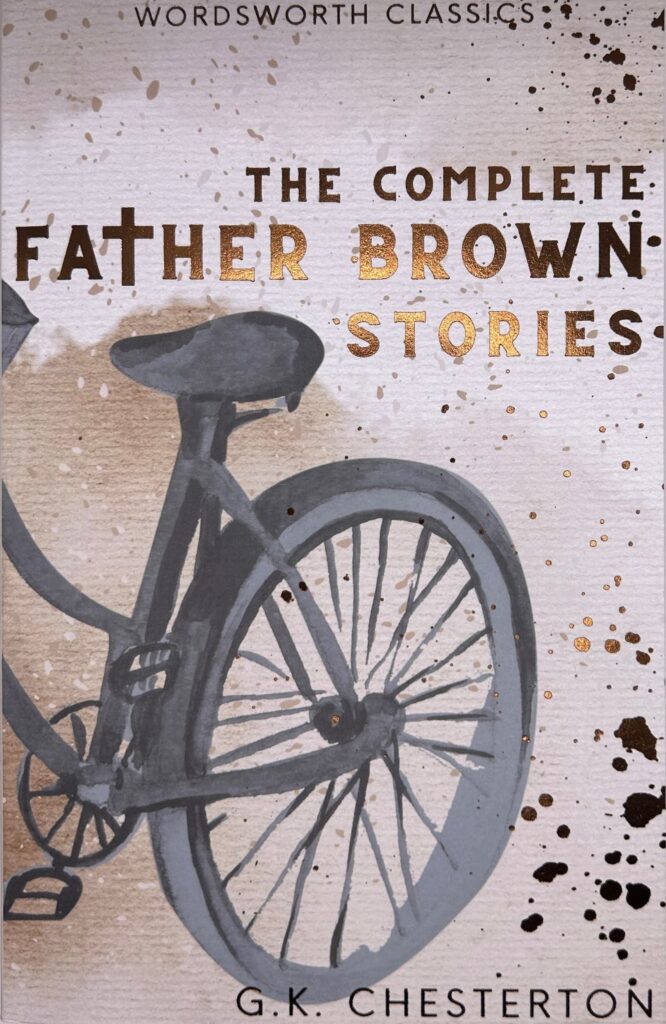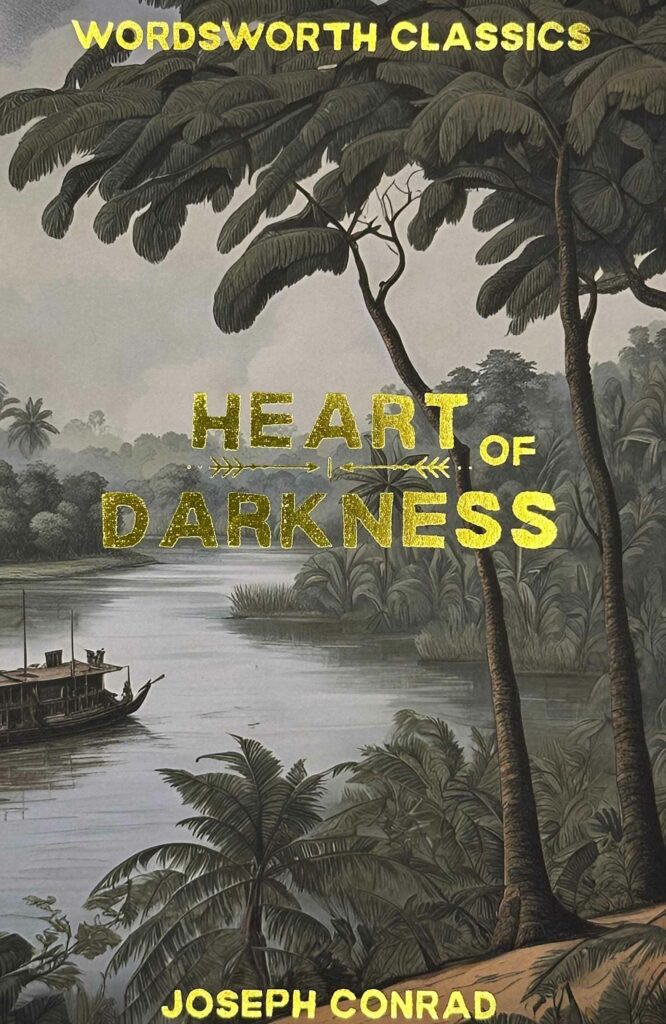
Stephen Carver explores The Dark Places of the Earth
Stephen Carver explores the dark world of Imperial Victorian Gothic
In ‘The Man Who Would Be King,’ Rudyard Kipling described the Native States of India as, ‘the dark places of the earth, full of unimaginable cruelty, touching the Railway and the Telegraph on one side, and, on the other, the days of Harun-al-Raschid’ (Kipling: 1890, 69). In this allegory of imperialism, in which two redcoats conquer an entire Afghan province before being ultimately destroyed by their arrogance, Kipling sets the scene by juxtaposing images of British progress with the age of the Arabian Nights. He thus places British India somewhere between the rational and the fantastic, which is where many of his stories occur. This is a conceptual borderland that is essentially present in all gothic narrative, that liminal space in which the ordered and pragmatic suddenly gives way to something much darker and elemental, a screaming madness of the unreal. What’s distinctive about Kipling’s gothic fiction – of which he wrote more than you might think – was that he was locating this boundary of ‘unimaginable cruelty’ in the present day, and not just in the far-flung reaches of the empire, but at the point at which the two cultures met. This was not a physical space. It was therefore much closer to home, and far more complex than the ostensibly simple dialectics of English rationalism versus Asiatic otherness might imply. As Conrad later wrote in Heart of Darkness, to the Romans, London, the centre of the British Empire and thus western civilisation, had once also ‘been one of the dark places of the earth’ (Conrad: 1983, 7).
Kipling’s early stories are at the forefront of a sub-genre in late-nineteenth-century magazine fiction that Victor Sage has usefully labelled ‘Empire Gothic,’ where the fraught relationship between colonists and colonised was explored, and to which we might usefully add the ‘lost world’ adventures of H. Rider Haggard and Sir Arthur Conan Doyle. This form of narrative reached its peak with Heart of Darkness, which prefaced both Modernism and the First World War. Kipling, who was, of course, Anglo-Indian, was replacing the traditional settings of the eighteenth-century gothic – European, historical, Catholic – with the exotic and the oriental, but with the addition of the contemporary and the psychological, the legacy of the nineteenth-century form. His Indian stories offer no comfortable relegation to a superstitious past, yet they nonetheless seem to demand a superstitious response, and this sits uneasily alongside the Victorian certainties of the Church of England. ‘Sometimes,’ lamented a contemporary Bookman reviewer, ‘he stoops to the Supernatural’ (qtd. in Page: 1984, 80).
This complicated cultural collision is everywhere in Kipling’s writing, but two particularly striking examples appear in his collection Life’s Handicap (1891), united by the presence of the enigmatic policeman, Strickland, the protagonist of half-a-dozen early stories and a minor character in Kim. ‘The Return of Imray’ is the more straightforward of the two, although sequentially and chronologically second. In this story, Imray, an English civil servant, vanishes without a trace, and Strickland takes over his bungalow. When the unidentified narrator of the story visits, he becomes uncomfortably aware that, ‘We were alone in the house, but nonetheless it was much too fully occupied by a tenant with whom I did not wish to interfere.’ There is wild hammering at the door at night, footsteps on the veranda, a shadowy figure glimpsed from the edge of a dream, and low, eerie whispers. Strickland’s dog, meanwhile, glares into darkened rooms, ‘with every hair erect’ (Kipling: 1897, 313). Eventually, they find Imray mummified upon a roof beam, his throat cut, hence the ghostly whispers. But India killed Imray as much as his murderer, Bahadur Khan because he was ignorant of the cultural codes. On meeting Khan’s son for the first time, the proud servant confessed that ‘He said he was a handsome child, and patted him on the head; wherefore my child died. Wherefore I killed Imray Sahib in the twilight’ (Kipling: 1897, 319). And it’s the twilight that lingers, despite Strickland’s assessment that Imray made a mistake, ‘Simply and solely through not knowing the nature of the Oriental, and the coincidence of a little seasonal fever’ (Kipling: 1897, 321). He does not, however, explain the apparition.
This acceptance of the paranormal is perhaps because of the previous story, which Imray’s chronicler describes as a ‘little affair’ that had, ‘brought me to the doors of a lunatic asylum’ (Kipling: 1897, 314). ‘The Mark of the Beast’ also has the feel of an anecdote at a gentleman’s club, disguising a much cannier use of the first person narrative as open testimony. In his preferred method of narration – the voice of the unidentified and slightly world-weary ex-patriot – Kipling foregrounds the boundaries between possible explanations for another uncanny event, thus revealing an uncomfortable schism between the religious and cultural values of East and West, as his introduction makes quite explicit:
East of Suez, some hold, the direct control of Providence ceases; man is there handed over to the power of the Gods and devils of Asia, and the Church of England providence only exercising an occasional and modified supervision in the case of Englishmen.
This theory accounts for some of the more unnecessary horrors of life in India; it may be stretched to explain my story (Kipling: 1897, 290).
In this story, a drunken Englishman called Fleete stubs a cigar out on a statue of the monkey god, Hanuman, and receives, in turn, a curse from a faceless, leprous priest referred to as the ‘Silver Man.’ In a long night in the company of Strickland and the storyteller, Fleete becomes increasingly bestial until, ‘His eyes were horrible to look at,’ after which, ‘Presently, from the room, came the long-drawn howl of a wolf’ (Kipling: 1897, 299).
A local doctor diagnoses advanced hydrophobia, but despite the narrator’s weak attempts at rationalisation, both he and Strickland know that the only way to save Fleete is to capture the ‘Silver Man’ and coerce him into removing a curse that according to their faith cannot possibly be real. This they do, torturing the leper in a passage that is ‘not to be printed,’ although it involves heated gun barrels and the narrator notes, before closing down the scene, that, ‘I understood then how men and women and little children can endure seeing a witch burnt alive’ (Kipling: 1897, 303).
With dark and entirely intentional irony, Fleete recovers. Kipling thus creates a paradox in which the Englishman must deny their own faith in favour of the ‘heathen,’ while the crafty reference to the witch mania of the sixteenth century suggests the exact opposite of rationalism, progress and civilisation. In the story’s denouement, Strickland and the narrator meet years later (possibly in England), when the former ‘had married and was a church-going member of society for his wife’s sake,’ and the author is persuaded to put the tale before the public. His conclusion returns to his opening point and fails to resolve the dilemma of belief at the heart of the story: ‘it is well-known to every right-minded man that the gods of the heathen are stone and brass, and any attempt to deal with them otherwise is justly condemned’ (Kipling: 1897, 306). To succeed, the men have been compelled to believe what is, by their definition, unbelievable, implying a cynical level of self-deception at the heart of their religion, if not all. English Christian certainty has been elegantly undermined, by a writer who is often matter-of-factly associated with nationalism and the imperial project.
In February 1892, the year after the publication of Life’s Handicap, a story appeared in the Strand Magazine that placed Kipling’s shadowy, imperial hinterland squarely in the English countryside. ‘The Adventure of the Speckled Band’ was Conan Doyle’s eighth Sherlock Holmes story. As is well-known, it is a locked room mystery in which dissolute step-father plots to murder his step-daughter to prevent the loss of inheritance through her impending marriage. Miss Stoner’s twin sister – who was also engaged – has already died under mysterious circumstances at the run-down family estate, and she presents herself to the great detective in ‘a pitiable state of agitation’ (Conan Doyle: 1892, 178). Notably, Richard Lancelyn Green has convincingly argued that the story’s premise came from a colonial traveller’s tale, ‘Called on by a Boa Constrictor. A West African Adventure,’ which appeared in Cassell’s Saturday Journal in 1891 (Green: 1998, 361).
Like Kipling’s favourite narrative voice, the tale is told in the first person in the form of a memoir by a companion and observer, Dr John Watson, who writes that ‘It is perhaps as well that the facts should now come to light, for I have reasons to know that there are wide-spread rumours as to the death of Dr Grimesby Roylott which tend to make the matter even more terrible than the truth’ (Conan Doyle: 1892, 176). As with the narrator of ‘The Mark of the Beast,’ Watson is attempting to set the record straight, although the ‘terrible’ vies with the ‘truth’ for ascendancy, suggesting the kind of interpretive ambivalence of gothic narrative skirting around the edges of the forthcoming explanation. Dr Roylott had spent many years in Calcutta, first in practice and then in prison for the murder of his Indian butler, and has, as Kipling would say, ‘gone native.’ The atmosphere of ‘The Speckled Band’ is one of cultural corruption, with Roylott, the ‘last survivor of one of the oldest Saxon families in England,’ preferring the company of gipsies – who represent the oriental – to his neighbours, and maintaining a small menagerie imported from India (Conan Doyle: 1892, 179). This includes, secretly, the swamp adder with which he intends to kill his step-daughter.
Watson’s descriptions of Roylott are conspicuously alien and animalistic:
A large face, seared with a thousand wrinkles, burned yellow with the sun, and marked with every evil passion, was turned from one to the other of us, while his deep-set, bile-shot eyes, and his high, thin, fleshless nose, gave him somewhat the resemblance to a fierce old bird of prey (Conan Doyle: 1892, 188).
Helen’s sister’s final words, ‘Oh, my God! Helen! It was the band! The speckled band!’ lead Holmes to initially believe that the killer might be a gipsy in a bright headscarf – an expert red herring – until the tables are turned and the monster turns on the master (Conan Doyle: 1892, 184). At the story’s climax, Roylott assumes the pantomime mantle of the headscarf-wearing gipsy, fusing, in effect, with the snake as he is fatally absorbed into one of those dark, Indian places:
Beside this table, on the wooden chair, sat Dr Grimesby Roylott, clad in a long grey dressing-gown, his bare ankles protruding beneath, and his feet thrust into red heelless Turkish slippers … Round his brow he had a peculiar yellow band, with brownish speckles, which seemed to be bound tightly round his head. As we entered he made neither sound nor motion.
‘The band! the speckled band!’ whispered Holmes.
I took a step forward. In an instant, his strange headgear began to move, and there reared itself from among his hair the squat diamond-shaped head and puffed neck of a loathsome serpent (Conan Doyle: 1892, 201 – 202).
Although the case is closed, its very nature leaves open the continuing threat of Eastern contagion and macabre unreason, the uncanny and gothic lurking beneath the more comfortable resolution of the realist detective story.
This threat becomes much more abstract and metaphysical in the Father Brown story ‘The Wrong Shape’ (1911), Chesterton’s Catholic priest and amateur sleuth, accompanied by the Watson-like Flambeau, offers a much more intuitive and mindful approach to the subject than Homes’ famous use of deductive reasoning. The story is a masterpiece of misdirection, in which the mysterious ‘Hindoo’ advising the poet, Leonard Quinton (the victim), on an Indian epic, is no more guilty of murder than are Dr Roylott’s gipsies. The plot, when it is exposed, is in fact a crime of passion committed by Quinton’s very English physician, who is in love with the poet’s wife, although the murder weapon is a ‘queer, crooked Oriental knife’ (Chesterton: 1911, 178).
Rather than the crime itself, the allegory lies in the controlling metaphor of the title, and Father Brown’s response to the knife, at first presented as no more than an ornamental artefact:
‘Why, look at it,’ cried Father Brown, holding out the crooked knife at arms’ length, as if it were some glittering snake. ‘Don’t you see it is the wrong shape? Don’t you see that it has no hearty and plain purpose? It does not point like a spear. It does not sweep like a scythe. It does not look like a weapon. It looks like an instrument of torture.’
It is, in fact, ‘the wrong shape in the abstract,’ like all Eastern art. ‘I have seen wicked things in a Turkey carpet,’ he concludes (Chesterton: 1911, 179 – 180). This, then, is the threat the empire poses, personified by the aesthete Quinton. As Sage argues, ‘The East is shapeless, and aestheticism is a flirtation with that shapelessness, the shapelessness of colour at the expense of form’ (Sage: 1993, 17 – 18). Art for art’s sake would be the death of Victorian realism, and therefore the social order, just as the authorial voice of the nineteenth-century novel represented a stable version of reality, mirroring the omniscience of God. ‘I want nothing,’ says the enigmatic Indian, three times, when accosted, an apparently simple answer that gnaws away at Father Brown until it becomes a bleak statement of existential desolation:
‘When that Indian spoke to us … I had a sort of vision, a vision of him and all his universe. Yet he only said the same thing three times. When first he said, “I want nothing,” it meant only that he was impenetrable, that Asia does not give itself away. Then he said again, “I want nothing,” and I knew that he meant that he was sufficient to himself, like a cosmos, that he needed no God, neither admitted any sins. And when he said the third time, “I want nothing,” he said it with blazing eyes. And I knew that he meant literally what he said; that nothing was his desire and his home; that he was weary for nothing as for wine; that annihilation, the mere destruction of everything or anything—’ (Chesterton: 1911, 187).
India, then, and by implication the British Raj, represented not just the wrong shape, but no shape at all; no heaven or hell, just the absolute horror of the infinite void: death, with no hope of resurrection. Only three years away from the industrial carnage of the Great War that the Age of European Imperialism inevitably wrought, it is this crisis of confidence, rather than Quinton’s murder, that resonates. And just as Strickland and Holmes notionally got the genie back into the bottle, so does Father Brown. The murder is solved, his faith holds strong, and English reason – being the right shape – wins out over Indian chaos; whether Protestant or Catholic, it is still, after all, Christian. But with hindsight, we know that this certainty, this arrogance, did not prevail in what T.S. Eliot famously called, ‘the immense panorama of futility and anarchy which is contemporary history’ (Eliot: 1923, 483). The Victorians were about to fall into that nothingness that Kipling had been warning them about all along.
WORKS CITED
Chesterton, G.K. (1911). The Innocence of Father Brown. London: Cassell and Company.
Conan Doyle, A. (1892.) Adventures of Sherlock Holmes. New York: Harper & Brothers.
Conrad, Joseph. (1983). Heart of Darkness. London: Penguin. (Original work published 1899.)
Eliot, T. S. (1923). ‘Ulysses, Order and Myth.’ The Dial LXXV (November), pp. 480 – 483.
Green, Richard Lancelyn (ed). (1998). The Adventures of Sherlock Holmes by Sir Arthur Conan Doyle. Oxford: OUP.
Kipling, Rudyard. (1890). The Phantom ’Rickshaw and Other Tales. Allahabad: A.H. Wheeler & Co.
Kipling, Rudyard. (1897). Life’s Handicap, Being Stories of Mine Own People. London: Macmillan.
Page, N. (1984). A Kipling Companion. London: Macmillan.
Sage, Victor. (1993). ‘Empire Gothic: Explanation and Epiphany in Conan Doyle, Kipling and Chesterton.’ In Bloom, Clive (ed). Creepers: British Horror & Fantasy in the Twentieth Century. London: Pluto.
Books associated with this article

The Adventures & Memoirs of Sherlock Holmes
Sir Arthur Conan Doyle

The Complete Father Brown Stories
G.K. Chesterton
